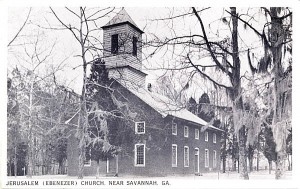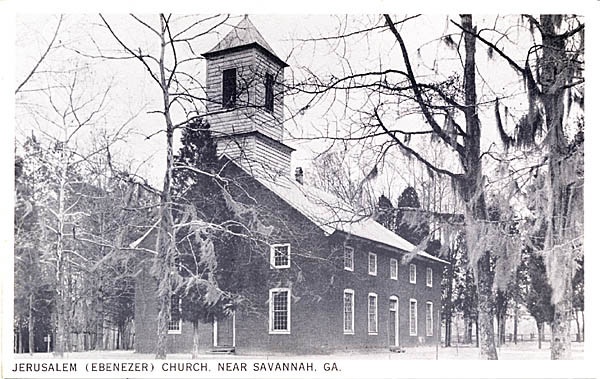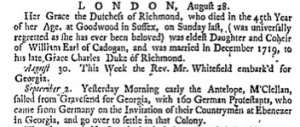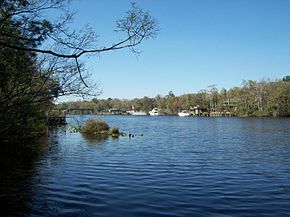Though I have lived in New Mexico for the past eleven years, I was born in Florida. I spent the first six years of my life there, and I have returned to visit many times since leaving. Despite growing up surrounded by the juniper bushes and red rocks of the New Mexican high desert, I have always been drawn back to the lush green trees, sweeping rivers, and humid climate of the South. Because of my deep love of the South, I was fascinated to learn that my family has roots in that region dating back to before the American Revolution.
The events that brought my ancestors to America began in Salzburg (part of modern-day Aus tria) in 1731. In that year, the archbishop of Salzburg passed the Edict of Expulsion against Protestants. To escape persecution, the Salzburger Protestants were forced to flee the country. English supervisors of the colony of Georgia offered land to the refugees, and the first group crossed the Atlantic in 1734. They founded the town of Ebenezer, in Effingham County, Georgia, choosing that name from a Biblical word meaning “Thus far the Lord has helped us.” At the right is a photograph of the Jerusalem Evangelical Lutheran Church, built by the Salzburgers in Ebenezer in 1769 and still standing today.
tria) in 1731. In that year, the archbishop of Salzburg passed the Edict of Expulsion against Protestants. To escape persecution, the Salzburger Protestants were forced to flee the country. English supervisors of the colony of Georgia offered land to the refugees, and the first group crossed the Atlantic in 1734. They founded the town of Ebenezer, in Effingham County, Georgia, choosing that name from a Biblical word meaning “Thus far the Lord has helped us.” At the right is a photograph of the Jerusalem Evangelical Lutheran Church, built by the Salzburgers in Ebenezer in 1769 and still standing today.
Though my ancestor George Gnann did not live in Salzburg itself (he was a potter from the small town of Langenau, Germany), he and his family were among the many Protestants who set out for Georgia in the years following the Edict of Expulsion. The Gnanns—George and his wife, Anna; their sons Andrew, Michael, and Jacob; and George’s brother, also named Jacob—sailed, via England, on board the ship Antelope, arriving in Georgia on October 23, 1751 and taking up residence in Ebenezer. When the American Revolution began several years later, Jacob and Andrew Gnann fought for their new land. (Their names are inscribed on the Wall of Veterans in the Veterans Park of Effingham County.) The Gnanns continued to reside in Georgia, and many still live there today.
One Gnann, however, ventured even farther south. In the mid-1800s, Ephraim Gnann (a great-grandson of George Gnann) entered Florida, settling near the Black Creek, in Clay County. In Clay County, Ephraim met another emigrant family—that of Jose Alvarez, an either Spanish or Portuguese (records remain inconclusive) settler who had arrived in Florida in the early 1800s. Jose had initially settled on Amelia Island (on the east coast of Florida), where he had enjoyed a prosperous business career, selling groceries, liquor, and dishes, as well as managing a restaurant and owning an orange grove. However, during battles between the United States and Spain in 1818-1819, nearly all of Jose’s merchandise and property was destroyed, and he abandoned Amelia Island, escaping inland to Clay County with his family. There, in 1842, Jose’s daughter Elizabeth married Ephraim Gnann. They had four children: Cletus, Francis, Elendar, and Elbert.
Descendants of Ephraim Gnann and Elizabeth Alvarez have continued to live in and around Clay County, Florida, ever since. In 1932, my grandmother, Virginia Davey Gnann (great-great-granddaughter of Ephraim and Elizabeth), was born in the city of Jacksonville, just north of Clay County, and my mother and her siblings were raised there as well.
My family moved away from Florida when I was seven, but I nevertheless have always considered myself to be a Southerner. Many of my fondest memories involve times spent in Florida, I dream of one day living in Jacksonville, and, when I was given the opportunity to return to the South for college, I seized the chance to come back to the land that I call home and that my ancestors have called home for more than two hundred and fifty years.
Works Consulted
Alvarez, Travis, comp. Descendants of Jose Alvarez. Houston: n.p., 2002. Print.
Alvarez, Travis. Joseph “Jose” Alvarez: His Descendants. Houston: n.p., [2003]. Print.
Alvarez, Travis, comp. Elizabeth Alvarez & Her Descendants. n.p.: n.p., 2003. Print.
“Black Creek at Old Ferry Rd. Boat Ramp.” Photograph. “Black Creek (Florida).” Wikipedia. Wikimedia Foundation, Inc., 5 October 2014. Web. 3 November 2014.
Davis, Robert. Georgia Citizens and Soldiers of the American Revolution. Easley, SC: Southern Historical Press, 1979. Print.
Gnann, Pearl. Georgia Salzburgers and Allied Families. 3rd ed. Easley, SC: Southern Historical Press, 1956. Print.
“London, August 28.” The Boston Post-Boy. 11 Nov. 1751. America’s Historical Newspapers. Web. 26 Oct. 2014.
P.A. Strobel. The Salzburgers and Their Descendants: Being the History of a Colony of German (Lutheran) Protestants, Who Emigrated to Georgia in 1734 and Settled at Ebenezer, Twenty-Five Miles Above the City of Savannah. Baltimore: T. Newton Kurtz, 1855. First Edition.
Purvis, Linda. “Jerusalem (Ebenezer) Church, Near Savannah, GA.” Photograph. Pinterest, 2013. Web. 27 Oct. 2014.
“The Salzburgers.” The Official Website of the Georgia Salzburger Society. Georgia Salzburger Society, n.d. Web. 19 Oct. 2014.
Volkhardt, Davey. “The Alvarez-Gnann Connection.” Comp. Travis Alvarez. Joseph “Jose” Alvarez: His Descendants. Houston, n.p., 2002. xx-xxii. Print.



